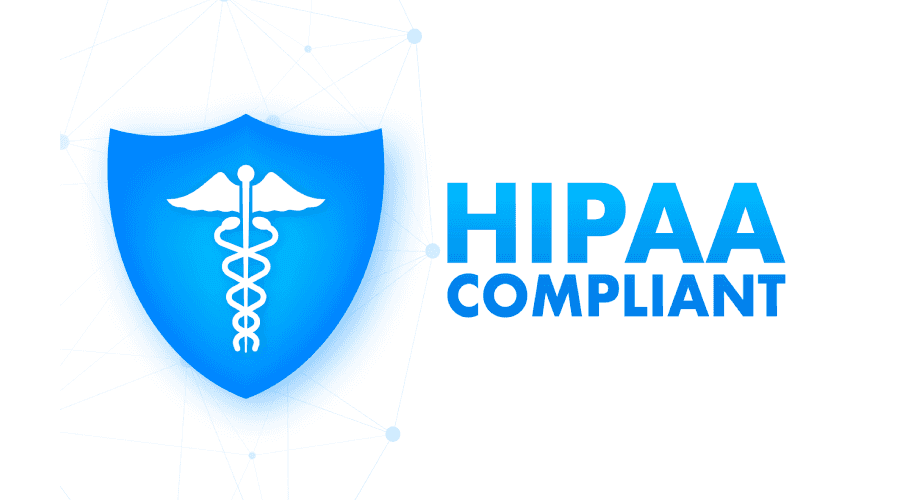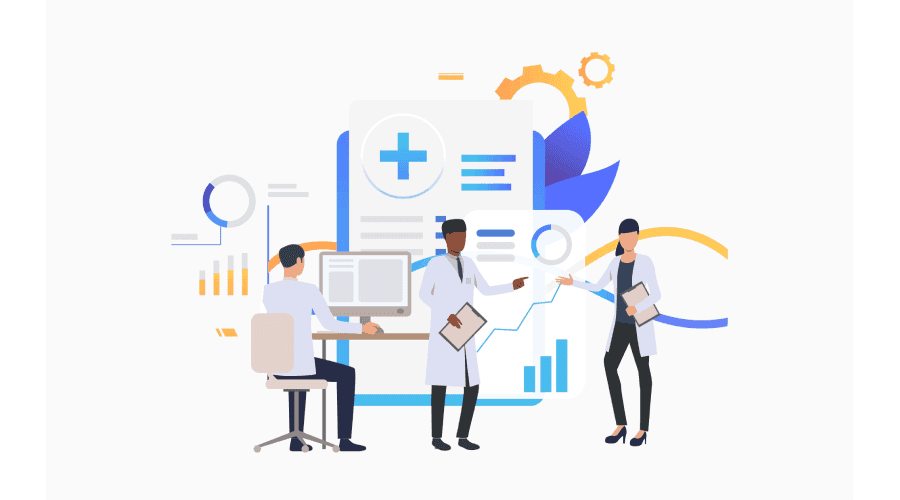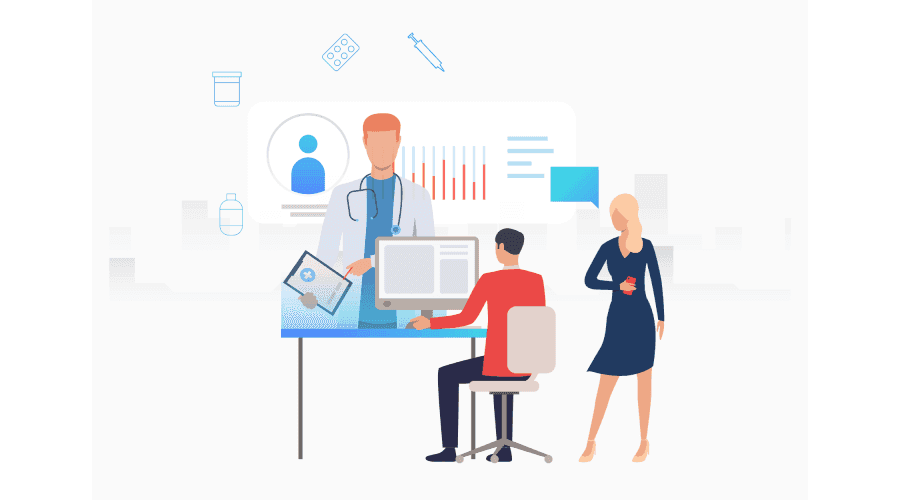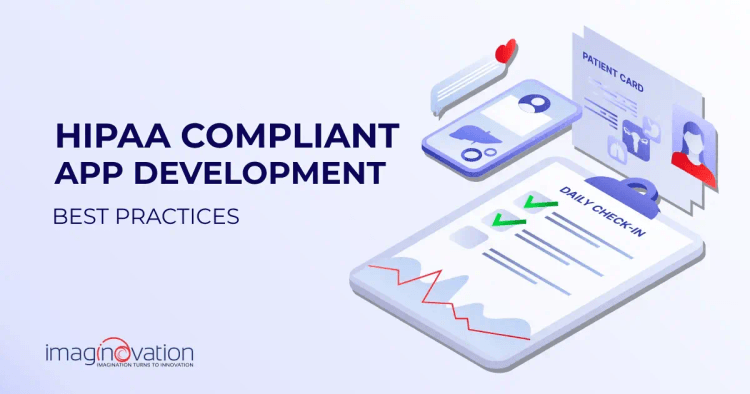In the evolving landscape of healthcare technology, safeguarding patient data is paramount. As we stride into 2025, the demand for healthcare apps is surging, but so are the regulatory standards. HIPAA, the Health Insurance Portability and Accountability Act, looms large, making compliance a critical consideration.
Whether you're a seasoned tech leader or a healthcare entrepreneur, ensuring your app aligns with HIPAA is non-negotiable. A single misstep can lead to legal and financial turmoil.
In this article, we delve into the world of "HIPAA Compliant App Development: Best Practices & Checklist for 2025." We'll distill complex regulations into actionable insights, providing you with a valuable checklist and strategies to navigate this intricate landscape.
Join us in this exploration where technology, healthcare, and compliance converge. Your healthcare app's success, security, and compliance start here.
Understanding HIPAA Compliance
The legislative tool Health Insurance Portability and Accountability Act (HIPAA) was created by the American Congress in 1996. It has standards that help to manage, protect, and share patient information securely. It is a stepping stone to improving health insurance portability as it helps solve the flaws and mistakes in the US health insurance system.
What's more, HIPAA ensures that patients’ private health data is well-protected and well-preserved by the healthcare provider.
The HIPAA laws and regulations have clear instructions on securing protected health information (PHI), using it aptly, and responding in the event of a PHI breach. The main parts of the HIPAA Rules and Regulations include:
- Privacy rules: Deals with protecting the medical records and PHI of the patients
- Security rules: Helps to protect the privacy of personal medical records
- Transaction rules: Relates to the transaction codes in the HIPAA transaction
- Identifiers rules: Relates to three unique identifiers that use HIPAA rules for administrative and financial purposes
- Enforcement rules: Focuses on the penalties and fines imposed on any data breach by the companies that have custody of the medical reports of the patients
Let’s look at some key reasons why HIPAA is important.
- Establishes safeguards for protecting PHI
- Ensures any violations of its standards are accountable
- Focuses on a higher level of standardization
- Offers more control to patients over their personal information
For Healthcare Providers:
- Security rules create trust
- Keep patient data safe
- Storage of data in a standardized industry-recognized format
For Patients:
- No identity fraud
- Prevents data breaches
- Preservation and confidentiality of PHI
- Control over who can get access to data
The implications of non-compliance with HIPAA are financial, but more importantly, they harm the reputation of the organization and can profoundly impact patient trust. Moreover, it can lead to the loss of medical licenses, certification, or accreditation of the healthcare facility, leading to the closure of the organization.
The penalties pertaining to non-compliance are stiff, and healthcare providers can face fines to the tune of $50,000 per violation or even up to $1.5 million per year for repeated violations. The hefty financial penalties could put small practices or clinics out of business.
Ultimately, non-compliance is not only unethical but also poses significant risks to patients and healthcare providers. All organizations must take the necessary steps to ensure compliance with all the rules or regulations of HIPAA.
Best Practices for HIPAA-Compliant App Development
Let's explore key best practices for developing healthcare apps that adhere to HIPAA regulations, ensuring the utmost security and compliance in handling sensitive patient data.

1. Perform a Thorough Risk Assessment
A risk assessment is a deeply involved process, and it should be one of the first steps to take as you consider app development. It offers a holistic picture of the gaps and how to mitigate potential risks.
Moreover, the HIPAA Security Rule has a pre-requisite for covered entities (CE) to conduct a thorough and accurate assessment of potential vulnerabilities. Entities may be unable to address existing risks in their risk management practices if they fail to carry out or partially conduct HIPAA risk assessments.
The assessment should include identifying potential risks to the confidentiality, integrity, and availability (CIA) of PHI. Plus, it must assess the likelihood and potential impact of each risk. It is critical that organizations use risk assessments as a part of their overall security program. They can define administrative policies that support compliance with HIPAA requirements.
For compliance, organizations can choose to turn to a 3rd party for HIPAA risk assessments and other compliance services.
2. Implement Strong Security Measures
A HIPAA-friendly app will deal with confidential information like PHI. It must protect all such data from cyber threats. Thus, the app must have various security measures to safeguard sensitive data.
The app must incorporate data encryption, application firewall, network security, and more. Data encryption is one critical facet of HIPAA compliance. It is crucial to ensure that the medical data is encrypted both in rest and transfer.
The app must include authentic methods to strengthen cybersecurity. Some ways are:
- Having secure password policies
- Allowing multi-component authentication (like biometrics, face ID, one-time generated passwords sent to devices or email)
- Enabling automatic logout
- Offering antivirus and firewall protection
- Extending security measures to mobile devices
- Using secure Wi-Fi networks or VPN software
3. Encrypting End-to-end Data-at-rest and Data-in-transit
We talked about end-to-end encryption; let's learn more. HIPAA guidelines about encryption are stringent. As per the act, it is stated that ePHI needs to be encrypted in both scenarios at rest and during transmission. Encryption will allow the data to be converted into an unreadable format. The output can further be unlocked only with a security key.
All covered entities (CEs) must invest in robust cryptographic protocols, which include IPser, PGP, SSH, and TLS/SSL for security data. Further, one may also wish to encrypt cloud servers, databases, and employee mobile devices, depending on the size of the organization.
4. Implement an Audit Mechanism
It is cool to have security measures in place as it will help to regulate suspicious activities. It will also be a good idea to track how users interact with an app and how they are doing it.
Developers can capture all such activities by creating activity logs. The team may consider implementing an audit procedure. Thus, it will enable recording and examining processes that involve the use of PHI.
5. Ensure Regular Updating and Patching of Software

Healthcare apps must be updated to ensure data security. Developers must release regular updates with security patches and new features.
Yet another critical role that ensures security is the role of app support. Developers must promptly respond to user requests and fix security issues. Moreover, healthcare apps must be able to adapt to the changing requirements of HIPAA and data protection laws.
6. Transfer PHI Using Secure Connections and Protocols
When developing the healthcare app, developers must use the most secure file-sharing solutions. Industry-standard protocols that offer encrypted file transfer, such as SFTP, FTPS, HTTPS, PGP, and AS2, among others, may be considered.
For example, SFTP offers a secure method when transferring files with PHI. It helps with encrypting data during transit. Plus, it requires user authentication for access and ensures that only authorized users can retrieve the shared information.
Secure protocols are critical in sensitive activities like user authentication. Besides, using secure protocols for remote administration plays a vital role when devices are expanded on-premise and in cases of isolated networks to internet-connected cloud-based applications.
7. Offer Options for Patient Data Backup and Removal
HIPAA-compliant backup solutions ensure the protection of sensitive health information, leading to building the trust of patients. It is critical to invest in a robust backup and recovery plan that completely aligns with HIPAA compliance.
At first, any HIPAA-compliant backup strategy must have reliable and secure encryption methods. Next, it will help develop policies around backup frequency, storage location, and system restoration processes. Make sure that there is a proper incident response plan to respond to unforeseen events such as ransomware attacks.
When it comes to HIPAA compliance, one of the best backup solutions is cloud-based. Cloud-based backup is a secure way to store and protect medical data. Some HIPAA-compliant cloud backup vendors who offer this service include ArcServe*,* Carbonite*,* IDrive*,* Microsoft Azure*,* andSpiderOak. When looking for a cloud-based backup solution, ensure that the provider meets all requisite regulatory requirements.
8. Train Employees on HIPAA Compliance and Data Security

True alignment to understanding the criticality of HIPAA compliance can happen when the whole organization takes responsibility. It is essential to train all employees on the importance of protecting PHI and the various consequences when there are violations. When everyone in the organization is more aware of the gravity of compliance, it can stir everyone to step up, and that can help you achieve complete security.
9. Extend Auditing to Partner Organizations
It is rare to find healthcare-related organizations using self-developed HIPAA-compliant software. Most often, such organizations prefer working with partner companies to augment their services.
It is good to know that business partners, too, come under the purview of HIPAA. Thus, when you choose to work with a partner organization of your choice, you must sign a business associate agreement. The document should state how PHI data is used by partner organizations, including IT consultants or software and hosting providers.
Checklist for HIPAA Compliant App Development in 2023
When developing a HIPAA-friendly app, remember to have a thoughtful review at each stage of development. Security should be a well-thought strategy and not an afterthought. Here’s a quick checklist for you.
1. Conducting Risk Analysis and Audit
At first, one can start by thoroughly exploring the risks involved by checking out the myriad vulnerabilities associated with PHI. The insights should also include a detailed evaluation of the features and functionalities of the healthcare app. Plus, it should have an assessment of the data storage and transmission practices of the app.
2. Hiring a HIPAA Compliance and Security Specialist
It is prudent to hire or partner with a solution provider who is a HIPAA compliance and security expert. Specialists (such as Imaginovation) who have the experience to develop a HIPAA-compliant mobile app can walk you through the entire development cycle.
3. User Authorization
One of the critical facets of HIPAA compliance is to limit PHI access to authorized individuals. Thus, when developing an app, it is a requisite to include stringent user authentication and authorization mechanisms.
Developers can consider creating unique accounts for each user. Plus, enforce robust passwords and adopt multi-factor authentication. Moreover, platform administrators can supervise user accounts to remove access for inactive users. Another method can be to assign access levels based on user roles.
4. Incorporating Security Measures
A HIPAA-friendly solution should have the necessary password protection protocols and audit trails in place. Plus, the app must have a privacy agreement for users, which can aid in preventing any data leakage.
5. Developing a Privacy Policy
When developing the app, one must have a clear privacy policy outlining how the app will handle PHI. The policy will inform users of their rights under HIPAA. Plus, it will also offer details on how the data will be stored, collected, and shared.
6. Incorporating Encryption
When looking at transmitting any ePHI, remember that it must be encrypted. The data must be encrypted during transmissions, and one of the first steps is to consider securing it with HTTPS and SSL protocols.
Moreover, please check if the cloud provider of your choice allows for the configuration of your SSL. It will ensure strong encryption methods in accordance with the HIPAA-compliant hosting checklist. One can also consider transmitting and storing passwords with the help of hash values.
7. Backup and Storage Encryption

It is mandatory for data to be backed up, stored securely, and made accessible to authorized staff only. The data stored includes databases, backups, and various logs, which must be available to authorized personnel only.
Consider storing in locations that are out of your control. Plus, remember to check whether the data is encrypted and inaccessible in scenarios where servers are compromised. For this, industry-approved encryption using AES and RSA algorithms with strong keys offers a good solution.
8. Identify and Access Management
A HIPAA-friendly solution needs to have identity and access management in place. The system should have access logs and event logs that track any long attempts and changes that are made to PHI.
It is good to consider using Two-Factor Authentication (2FA) to verify an individual's identity. The method helps ensure that only authorized users can access sensitive data and information.
Moreover, there are new technologies that can be incorporated, such as biometrics and single sign-on (SSO). The emerging technologies help counteract spoofing attempts.
It is also a great idea to have attribute-based access control that helps resolve snags in traditional role-based authorization in cases where user roles may overlap.
9. Training Employees
A robust app needs support from employees, and training them on HIPAA regulations can help them understand the significance of data security and privacy. Thus, remember to have all employees, especially the ones who access PHI, be made aware of their responsibilities under HIPAA.
10. Using HIPAA-compliant Hosting Service
It is excellent to consider using a hosting service that is HIPAA-compliant. When you do so, it helps ensure that the data on the app is stored and transmitted securely. HIPAA hosting providers also have extra firewall security, which augments secure storage.
11. Signing a Business Associate Agreement
Developers who are creating apps for a healthcare organization must sign a business associate agreement (BAA). The agreement helps outline the responsibilities and obligations of both parties under HIPAA.
Wrapping Up
As security remains top of mind for healthcare organizations, HIPAA compliance will be critical when developing an app. HIPAA-friendly solutions ensure that the app is designed and developed to address all challenges and ensure complete security at all stages of handling, storing, using, and managing data.
Get ready to strengthen your HIPAA compliance with a game-changing solution. It's time you stay compliant without any hassles!
Develop HIPAA-Compliant Mobile App With Imaginovation
If you wish to curate a robust HIPAA-compliant mobile app, and you don’t know where to begin, let us do all the heavy lifting for you. We can walk you through the entire development cycle.
We are an award-winning app development company in Raleigh with incredible experience working on emerging technologies. We can help develop game-changing HIPAA-friendly solutions for you.
Ready to build an app, but not sure where to start?
We've got you covered. Click the button below to get started.





